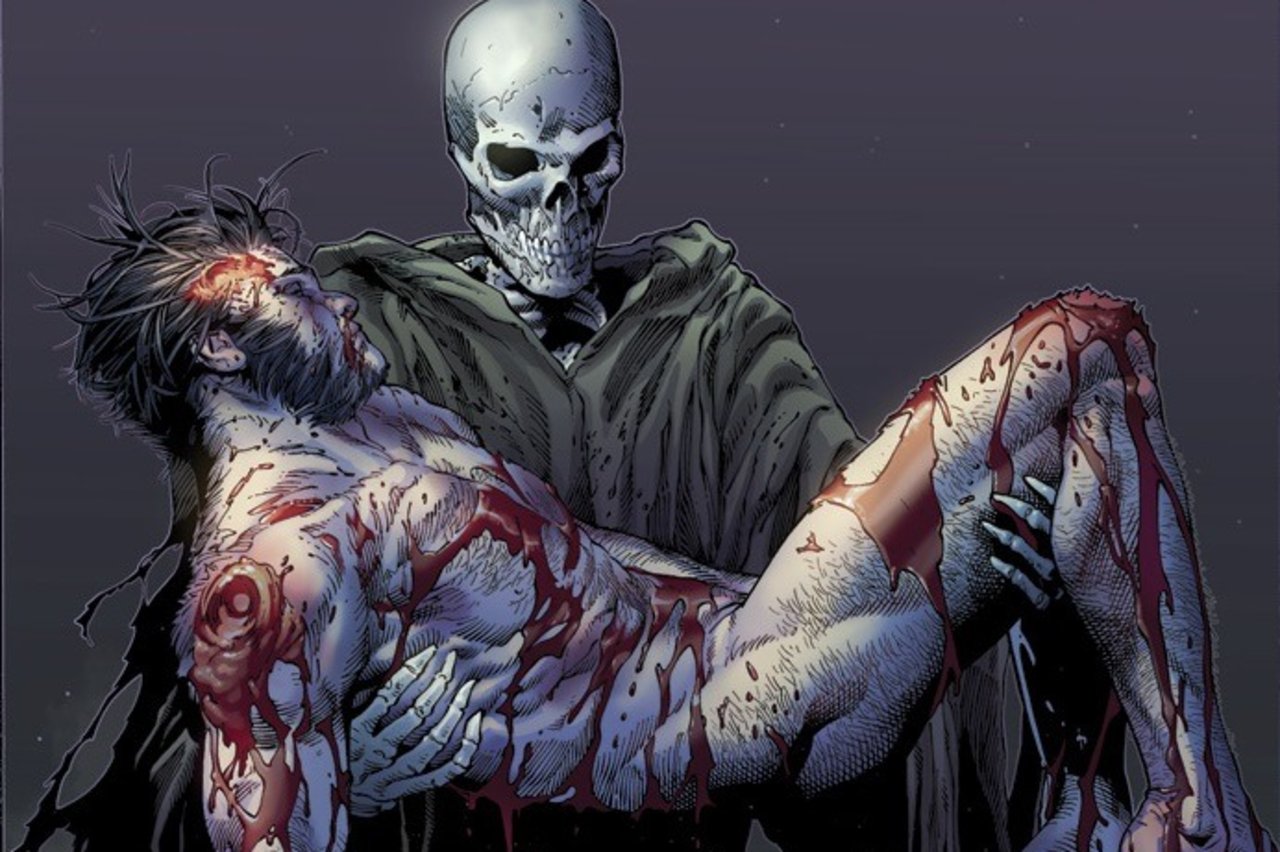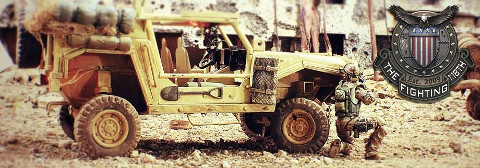Marvel knows you love Wolverine. So it's killing him.
Marvel knows you love Wolverine. So it'''s killing him. - Vox
Updated by Alex Abad-Santos on September 14, 2014, 10:00 a.m. ET

The Death of Wolverine
In less than a month, Marvel will put one of its favorite heroes to sleep. Wolverine, the hairy, Canadian bundle of muscle with the claws, will die on October 8 (just in time for New York Comic-Con), when the comic book The Death of Wolverine wraps up.
There might be some questions as to why Marvel would want to kill one of its most popular characters and the face of the X-Men franchise. And there may be some queries as to how one kills someone who's immortal.
Here then, is a brief guide to the death of Wolverine:
Why is Wolverine dying? I thought he can't die?
Wolverine's death may come as a shock to people who aren't all that familiar with what's going on the Marvel comic universe. Most people know Wolverine to be the mutant with claws, but his real mutant ability, something that X-Men movies have made very clear, is that he has the ability to heal himself and is therefore immortal.
In Wolverine's solo series, writer Paul Cornell has written an arc in which Wolverine gets infected with an alien virus and loses his healing factor as a result. The loss of his mutant ability has been woven into the character's many comic book appearances. Here's a panel from Storm #2, which explores Wolverine's loss of his healing ability:
/cdn1.vox-cdn.com/uploads/chorus_asset/file/694722/Screen_Shot_2014-09-12_at_11.33.24_AM.0.png)
Wolverine and Storm talk (Marvel)
There's more to this than just telling a good, poignant story. And it has to do with money.
The business of killing your darlings
"It's [death] been done to death, no pun intended," John Jackson Miller, a New York Times best-selling author and curator of Comicchron, a site that tabulates monthly comic book sales, told me. "It developed in the '70s when [comic companies] began aggressively marketing the events of the lives of comic book characters to the people who were most interested in their adventures, the readers."
Comic publishers want to sell issues, and, to sell issues, there needs to be "stuff" happening in them: fights, weddings, births, new characters, and, yes, deaths.
The impact of this only grows when these events involve beloved characters. Fights can get old, but fights between two iconic characters are better. Weddings are fine, but weddings between two well-loved superheroes are better. Births are okay, but the birth of Superman is better. And deaths can be page-turners, but not like the death of a iconic character.
"The seminal moment for character death came in November of 1992 — the death of Superman," Miller said.
Comics readers knew that Superman, like most dead superheroes, would be coming back, but the mainstream press got hold of the story and hyped it up. This was also at a time when people were really into buying rare comic books in hopes that they could later sell them for for sky-high prices. The hype and swirling media frenzy created a mainstream demand for the book and a record day in the comic industry.
"It's what remains, to this day, the biggest sales day in the medium —$30 million of business was done on that day in 1992, and it was spread over 10,000 comic shops in North America," Miller said.
According to the Bureau of Labor Statistics, $30 million in 1992 is equivalent to around $87 million in 2014. If the event of Superman's death occurred in 2014, it would be as big as a summer blockbuster movie opening:
/cdn1.vox-cdn.com/uploads/chorus_asset/file/694414/Screen_Shot_2014-09-11_at_10.20.14_PM.0.png)
Those sales are what Marvel wants to tap into. However, we're not in the comic bubble of 1992. There have been plenty of iconic superhero deaths since Superman's (Jean Grey multiple times, Nightcrawler, Kitty Pryde, Colossus, Magik — and that's just X-Men characters alone). And each one of those deaths chips away at the idea that superhero death is somehow final or rare.
Miller explained that it's rare to find a comic book today that achieves a great deal of value and retains it. There are no $30-million days in the business anymore. What retailers are aiming for are sales spikes (200,000+ issues sold) when a character dies and when he or she returns, plus hopefully some new readers.
One of the more recent examples of this was in 2012, when Marvel killed Peter Parker. He returned in April of 2014 and sold a megaton of comics:
/cdn0.vox-cdn.com/uploads/chorus_asset/file/694416/Screen_Shot_2014-09-11_at_10.44.59_PM.0.png)
Marvel's Uncanny Position
The top-selling comic for the past year has been Batman, from Marvel's chief rival, DC Comics. For the last two years, Batman has held down a spot in the top five comics sold in North America, according to Comicchron's numbers. Save for major crossover events, debuts, or the aforementioned death and return of Peter Parker, it usually holds the top spot. Batman has the kind of success that comic companies want.
Around 30 years ago and up until the early 2000s, Marvel had this kind of power over the industry with the X-Men. In the 90s, several X-Men titles and spinoffs were created and rose to the top of the charts, and the success continued. However, Marvel wasn't doing so well. It had filed for bankruptcy in 1996 and had sold movie rights to its characters, including Spider-Man and X-Men, to Sony and Fox, respectively, in order to keep afloat.
These movie rights have a direct effect on comic business. Marvel isn't in control of X-Men movies, and it doesn't get the same kind of money from an X-Men movie as it would from a movie featuring characters it fully owns, such as the Avengers or Guardians of the Galaxy. Tom Brevoort, Marvel's Senior Vice President of Publishing, has confirmed as much. This June, Brevoort said that investing in properties Marvel doesn't own, most notably the X-Men, isn't the best idea.
If you had two things, and on one you earned 100% of the revenues from the efforts that you put into making it, and the other you earned a much smaller percentage for the same amount of time and effort, you'd be more likely to concentrate more heavily on the first, wouldn't you?
One of the examples of this effort is Rocket Raccoon. Rocket, an anthropomorphic, salty raccoon, was in the Guardians of the Galaxy film and was promoted in every possible way (e.g. toys, merchandise, apparel). In the wake of Guardians' onslaught, a Rocket Raccoon comic was released in July and sold 293,913 copies, taking the top spot away from Batman.
In the same month that Rocket Raccoon got the top spot, the top-selling X-Men title, All-New X-Men, came in at 26th place. The X-Men's loss of dominance begins much earlier, around March of 2006 — two months before the movie X-Men: the Last Stand.
While there is a strong feeling among certain X-Men fans that Marvel wants to see the X-Men fail, low comic sales don't benefit Marvel. In Marvel's perfect world, it would see gigantic comic sales and low interest in X-Men movies, because then it would be able to convince Fox to give back the rights. (This is never happening in our lifetimes.) What the company would settle for is a shot in the arm for a middling franchise and new readers.
R.I.P. (not really)
The only comic book character that has died and stayed dead has been Peter Parker's Uncle Ben. Wolverine is no Uncle Ben. If Wolverine is really, truly going to die, then he will really, truly, come back to life in the future.
In fact, the X-Men have a knack for coming back to life. Jean Grey, a character who comes with a long-running footnote about her multiple deaths and future children, first died in 1980, only to be brought back over and over. Kitty Pryde "died" (she was trapped in a bullet in space) in 2008, and didn't return to the comics until two years later. Nightcrawler died in X-Force #26 in 2008 while facing a villain named Bastion, but he returned in 2013. Other X-Men like Magik and Colossus, and even fringe, baby X-Men like Wallflower have all died and come back at various points.
As Wolverine's death draws near, Wolverine fans can take solace in the words of Len Wein, who created the character in 1974: "No one in comics is ever really dead, unless you can see the body. And usually not even then."
Marvel knows you love Wolverine. So it'''s killing him. - Vox
Updated by Alex Abad-Santos on September 14, 2014, 10:00 a.m. ET

The Death of Wolverine
In less than a month, Marvel will put one of its favorite heroes to sleep. Wolverine, the hairy, Canadian bundle of muscle with the claws, will die on October 8 (just in time for New York Comic-Con), when the comic book The Death of Wolverine wraps up.
There might be some questions as to why Marvel would want to kill one of its most popular characters and the face of the X-Men franchise. And there may be some queries as to how one kills someone who's immortal.
Here then, is a brief guide to the death of Wolverine:
Why is Wolverine dying? I thought he can't die?
Wolverine's death may come as a shock to people who aren't all that familiar with what's going on the Marvel comic universe. Most people know Wolverine to be the mutant with claws, but his real mutant ability, something that X-Men movies have made very clear, is that he has the ability to heal himself and is therefore immortal.
In Wolverine's solo series, writer Paul Cornell has written an arc in which Wolverine gets infected with an alien virus and loses his healing factor as a result. The loss of his mutant ability has been woven into the character's many comic book appearances. Here's a panel from Storm #2, which explores Wolverine's loss of his healing ability:
/cdn1.vox-cdn.com/uploads/chorus_asset/file/694722/Screen_Shot_2014-09-12_at_11.33.24_AM.0.png)
Wolverine and Storm talk (Marvel)
There's more to this than just telling a good, poignant story. And it has to do with money.
The business of killing your darlings
"It's [death] been done to death, no pun intended," John Jackson Miller, a New York Times best-selling author and curator of Comicchron, a site that tabulates monthly comic book sales, told me. "It developed in the '70s when [comic companies] began aggressively marketing the events of the lives of comic book characters to the people who were most interested in their adventures, the readers."
Comic publishers want to sell issues, and, to sell issues, there needs to be "stuff" happening in them: fights, weddings, births, new characters, and, yes, deaths.
The impact of this only grows when these events involve beloved characters. Fights can get old, but fights between two iconic characters are better. Weddings are fine, but weddings between two well-loved superheroes are better. Births are okay, but the birth of Superman is better. And deaths can be page-turners, but not like the death of a iconic character.
"The seminal moment for character death came in November of 1992 — the death of Superman," Miller said.
Comics readers knew that Superman, like most dead superheroes, would be coming back, but the mainstream press got hold of the story and hyped it up. This was also at a time when people were really into buying rare comic books in hopes that they could later sell them for for sky-high prices. The hype and swirling media frenzy created a mainstream demand for the book and a record day in the comic industry.
"It's what remains, to this day, the biggest sales day in the medium —$30 million of business was done on that day in 1992, and it was spread over 10,000 comic shops in North America," Miller said.
According to the Bureau of Labor Statistics, $30 million in 1992 is equivalent to around $87 million in 2014. If the event of Superman's death occurred in 2014, it would be as big as a summer blockbuster movie opening:
/cdn1.vox-cdn.com/uploads/chorus_asset/file/694414/Screen_Shot_2014-09-11_at_10.20.14_PM.0.png)
Those sales are what Marvel wants to tap into. However, we're not in the comic bubble of 1992. There have been plenty of iconic superhero deaths since Superman's (Jean Grey multiple times, Nightcrawler, Kitty Pryde, Colossus, Magik — and that's just X-Men characters alone). And each one of those deaths chips away at the idea that superhero death is somehow final or rare.
Miller explained that it's rare to find a comic book today that achieves a great deal of value and retains it. There are no $30-million days in the business anymore. What retailers are aiming for are sales spikes (200,000+ issues sold) when a character dies and when he or she returns, plus hopefully some new readers.
One of the more recent examples of this was in 2012, when Marvel killed Peter Parker. He returned in April of 2014 and sold a megaton of comics:
/cdn0.vox-cdn.com/uploads/chorus_asset/file/694416/Screen_Shot_2014-09-11_at_10.44.59_PM.0.png)
Marvel's Uncanny Position
The top-selling comic for the past year has been Batman, from Marvel's chief rival, DC Comics. For the last two years, Batman has held down a spot in the top five comics sold in North America, according to Comicchron's numbers. Save for major crossover events, debuts, or the aforementioned death and return of Peter Parker, it usually holds the top spot. Batman has the kind of success that comic companies want.
Around 30 years ago and up until the early 2000s, Marvel had this kind of power over the industry with the X-Men. In the 90s, several X-Men titles and spinoffs were created and rose to the top of the charts, and the success continued. However, Marvel wasn't doing so well. It had filed for bankruptcy in 1996 and had sold movie rights to its characters, including Spider-Man and X-Men, to Sony and Fox, respectively, in order to keep afloat.
These movie rights have a direct effect on comic business. Marvel isn't in control of X-Men movies, and it doesn't get the same kind of money from an X-Men movie as it would from a movie featuring characters it fully owns, such as the Avengers or Guardians of the Galaxy. Tom Brevoort, Marvel's Senior Vice President of Publishing, has confirmed as much. This June, Brevoort said that investing in properties Marvel doesn't own, most notably the X-Men, isn't the best idea.
If you had two things, and on one you earned 100% of the revenues from the efforts that you put into making it, and the other you earned a much smaller percentage for the same amount of time and effort, you'd be more likely to concentrate more heavily on the first, wouldn't you?
One of the examples of this effort is Rocket Raccoon. Rocket, an anthropomorphic, salty raccoon, was in the Guardians of the Galaxy film and was promoted in every possible way (e.g. toys, merchandise, apparel). In the wake of Guardians' onslaught, a Rocket Raccoon comic was released in July and sold 293,913 copies, taking the top spot away from Batman.
In the same month that Rocket Raccoon got the top spot, the top-selling X-Men title, All-New X-Men, came in at 26th place. The X-Men's loss of dominance begins much earlier, around March of 2006 — two months before the movie X-Men: the Last Stand.
While there is a strong feeling among certain X-Men fans that Marvel wants to see the X-Men fail, low comic sales don't benefit Marvel. In Marvel's perfect world, it would see gigantic comic sales and low interest in X-Men movies, because then it would be able to convince Fox to give back the rights. (This is never happening in our lifetimes.) What the company would settle for is a shot in the arm for a middling franchise and new readers.
R.I.P. (not really)
The only comic book character that has died and stayed dead has been Peter Parker's Uncle Ben. Wolverine is no Uncle Ben. If Wolverine is really, truly going to die, then he will really, truly, come back to life in the future.
In fact, the X-Men have a knack for coming back to life. Jean Grey, a character who comes with a long-running footnote about her multiple deaths and future children, first died in 1980, only to be brought back over and over. Kitty Pryde "died" (she was trapped in a bullet in space) in 2008, and didn't return to the comics until two years later. Nightcrawler died in X-Force #26 in 2008 while facing a villain named Bastion, but he returned in 2013. Other X-Men like Magik and Colossus, and even fringe, baby X-Men like Wallflower have all died and come back at various points.
As Wolverine's death draws near, Wolverine fans can take solace in the words of Len Wein, who created the character in 1974: "No one in comics is ever really dead, unless you can see the body. And usually not even then."

